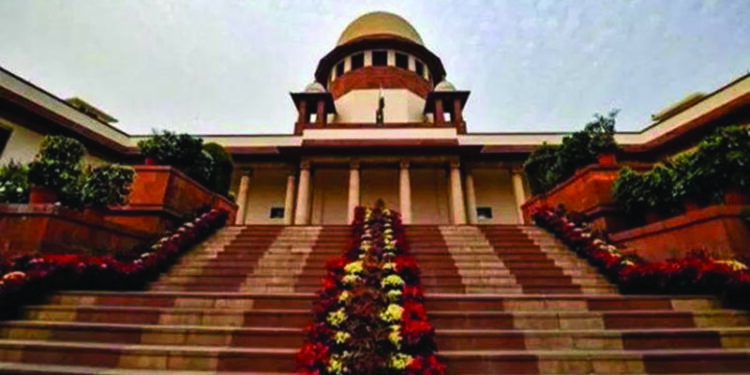NE LEGAL BUREAU
NEW DELHI, JULY 12
The Supreme Court on Monday asked a petitioner to peruse new IT rules and said it may hear next week his plea seeking a probe either by CBI or NIA against Twitter and its users for allegedly posting “Islamophobic posts” after Tablighi Jamaat congregation at Nizamuddin last year which was purportedly dubbed as one of the reasons for spread of COVID-19.
A bench of Chief Justice N V Ramana and justice A S Bopanna, at the outset, asked lawyer Khaja Aijazuddin, who has filed the plea in his personal capacity, to approach the Central government with the petition in which he has also sought a direction for framing guidelines under the Information Technology Act against spreading of “hate messages against any religious community including Islamophobic posts on various Social Media platforms”.
“Have you read the latest IT Rules,” the bench asked the lawyer during the hearing conducted through video conferencing here.
As Aijazuddin started reading the new IT Rules, the bench said it is posting the matter after a week and in the meantime, the petitioner may peruse the rules and come back prepared.
An appeal was filed by Aijazuddin against an order of April 22 of the Telangana High Court asking him to approach the apex court for relief of seeking directions to the Centre to restrain all online social media networks in India and not to carry out any Islamophobic posts.
The plea also said with respect to the prayer for issuing directions to the Centre to register criminal complaint against Twitter and its users for allegedly spreading “hatred”, the High Court merely directed the Central government to consider the petition.
“However, no clear direction regarding the same (registration of FIR) was given by the High Court,” the plea alleged.
A religious congregation Tablighi Jamaat was organized at Nizamuddin here from March 13 to March 15 last year and this was allegedly dubbed as one of the key reasons for the spread of COVID-19 in the country.
The plea alleged Islamophobic posts on various social media platforms were spread after the religious congregation showing believers of a particular faith in poor light.












